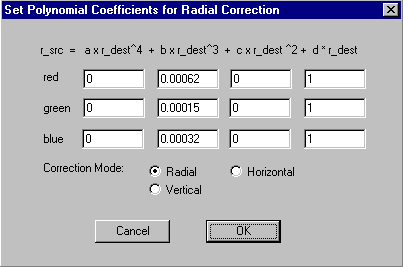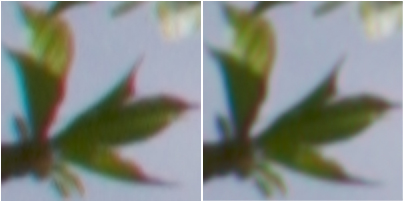| Going Wildly Wide: AFS 12-24 mm
f/4 G ED IF DX Nikkor Reviewed |
|
|
| by Bjørn
Rørslett |
|
4.
Chromatic Aberration (CA)
Chromatic aberration (CA) was virtually
absent from any of the brick wall test images at any aperture
when the lens was set to its 24 mm focal setting. This in its
turn resulted in a high-contrast rendition with vibrantly satured
colours, typical of the best of the optics in which ED glass is
employed. The crispness of the images was highly convincing and I
don't think any of my prime 24 mm lenses could outperform the
12-24 DX here. Field curvature was likewise kept under strict
control and this, in combination with an exemplary even
illumination of the entire frame, resulted in crisply defined
image corners even at f/4. Illumination was in fact remarkably
uniform across the entire digital frame at all focal settings.
Thus, corner light fall-off was absolutely negligible and only
made itself a little more visible at f/4 when the lens was zoomed
out towards the 12 mm setting. This goes to show that the optical
design is really benefitting from all the fancy aspherical
elements in it.
However, towards the 12 mm setting, chromatic
aberration was plainly visible in my test shots. Colour
fringinging by CA manifested itself in various ways and varied
between the red-cyan and purple-green variants across the imaged
frame, but was low or absent in the centre of the image itself. I
suspect the diversity in the ways which fringing appeared may
relate to the non-linearity of geometric distortion (see below).
The fringes are not very wide, regularly only 1-3 pixels, but may
on some areas be annoyingly visible when the image is closely
scrutinised. High-contrast objects near the perimeter of the
frame are the most likely to show colour fringing, and only when
the lens is operated at its shortest focal settings.
 |
To invoke possible colour fringing, I
shot this high-contrast image with the 12-24 DX on my
D1X, set to 12 mm and f/22 (hand-held).
The red
square is presented with and without post-processing
below.
Also note
the presence of the green "blob" caused by the
sun skimming across the front element, the sun itself is
exactly outside the frame. This is a worst-case scenario
for the 12-24 DX lens.
|
© Bjørn
Rørslett/NN |
The "Correct" module of Panorama
Tools (can be downloaded from www.tawbaware.com) comes in handy for fixing up the remnants of
chromatic aberrations. Judicious tweaking of the "b"
coefficient ineach colour channel had a healthy impact on the
final image so the issue can be at least abated if not
eliminated. However, I did not have opportunity to do anything
else than a "quick-and-dirty" estimate of the
coefficients in this module (radial correction, for images with
f=12 mm), but at least these values may serve as starting
pointers for further experimentation. Further shooting has shown
that some overcorrection in fact may occur, but this depends
largely on the subject depicted and can easily be adjusted in
Photoshop by fading the Correct action.


© Bjørn
Rørslett/NN
|
A 100 x 100 pixel area of the
test image (above), with colour fringing clearly visible
in the original image (left). Running the
"Correct" module of Panorama Tools helped
greatly to mitigate the occurrence of CA.
(image sharpness isn't great in
this example, but what can you expect from a hand-held
shot at 1/15 sec?)
|
You need to set the observed CA into a
proper perspective. We are looking into truly minute
discrepancies from the "perfect", virtually
unattainable optical model here. Thus, a spatial difference of 2
pixels between the red and green foci corresponds to a deviation
of 6 µm in the imager plane (= 6/1000 of a millimetre, assuming
both channels have similar magnitude of error).
I think we rapidly approach a break-point
in digital lens development where the manufacturer sees the
better solution is simply using post-processing to enhance the
image, instead of trying further to improve the optical design
itself. Since the lens can by electronic means relay all the
important data to the camera, such post-processing should not be
too difficult to design. Probably the camera models of today and
the near future would not be endowed with sufficient computing
power to take on such a task, but today's PCs and Macs are
entirely up to the job already, given a dedicated program can be
obtained.
| Going Wildly Wide: AFS
12-24 mm f/4 G ED IF DX Nikkor Reviewed |
|


